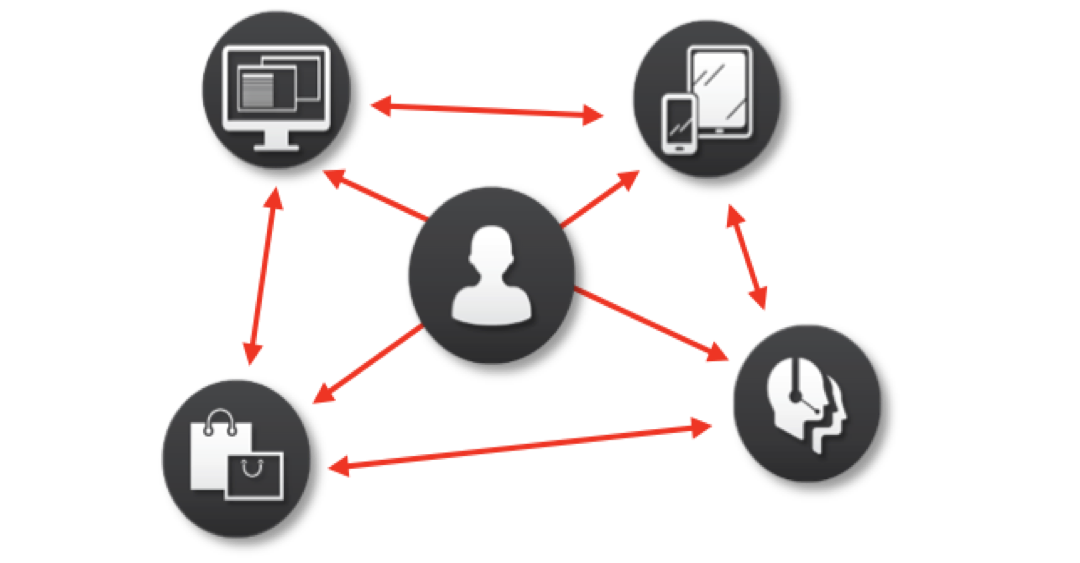Mapping the Multi-Channel Customer and Member Journey
“We are in the age of the customer” that is what many across industries are hearing on a daily basis whether in the news, online or in their company or organization meetings.
Some shrug and say what is so different?
“We have always needed customers to buy our products, read our content or we have always needed members to belong to our organization. We are here to provide to our customers/members and reap the revenue and other benefits.”
In many regards, those statements are still very true but….
We are in the age of the customer because customers and members have more choice and control than ever before as a result of technology and digital.
Customers and members have devices, screens and many new ways to interact with competitors and us that simply didn’t exist or weren’t well adopted just a few short years ago.
ASIDE: A customer can research your products online, compare them to others, talk to their friends and family, go into a physical store, talk to your staff, decide to purchase that product then go home and contact customer service.
All of those new ways to interact can be described as multi-channel where a “channel” can represents the telephone call center, the online support center, the website, the mobile site or app, the physical store.
Previously, each of those channels were possibly used by silos of customers and managed by a silo within the company or organization. Today one customer uses all of those different channels to interact with your business or organization.
ASIDE: A recent Harris Interactive study shows that 63 percent of consumers who encounter a bad mobile experience from an organization also believe that organization will not meet their expectations across all channels beyond mobile such as Web and bricks and mortar.

In the age of the customer and in recognition that we live in a multi-channel world, each of those interactions can be an opportunity or a chance for failure. If you have five channels representing each product and if you have say 5 products: that results in 25 different opportunities to satisfy the customer or it results in 25 chances to create a dissatisfied customer. The dissatisfied or satisfied customer is then, via word of mouth, going to share his or her opinion with others.
Companies and organizations monitor and collect data for each of the channels and share that information forward. Often the results are kept in context of the silo without connectivity to how that silo is or isn’t impacting the overall multi-channel experience.

Measuring a channel in isolation is only telling part of the story. It is like seeing only one side of the coin. You can guess what is on the other side but isn’t it better to know concretely?
Acting or reacting to the single channel performance, without consideration of all of the channels, is only giving you a small amount of information on your customers or members interactions with you.
That single view does not provide you the opportunity to see that one customer/member and their interactions across all channel experiences.
That single view is not showing you what your company or organization’s entire multi-channel experience looks like.

If the experience lacks consistency your customer and members will be confused about who you are, what your brand represents and what they can expect from you.
You are setting yourself up for misinformed decision-making.
ASIDE: I had the privilege to keynote a conference a few weeks ago. My talk focused on the Multi-Channel Customer Journey similar to this post. I asked the 200 attendees who had mapped the customer’s digital journey. One hand was raised. I then asked who had mapped the “Multi-Channel Customer Journey”; no hands went up. What was most shocking to me is that it is 2015. The web, mobile and screens are engrained in society and customers are becoming more and more comfortable interacting across all channels. Mapping the customer journey is critical to understanding.
How can you better prepare your company or organization and ensure those 25 possible interactions with that one customer aren’t chances for failure?
Lets start first with mapping the customer or member journey across all of the channels.
Step One: Take the systems thinking approach of looking outside in, removing your institutional knowledge filters and kick-start the journey mapping process to truly allow you to see what the customer or member sees.
Don’t fall into the trap of believing you know what the customer wants or sees. The image below shows what often happens in organizations. Note how each part of an organization developed what they believed the customer wanted and what the customer actually wanted.

ASIDE: Today’s markets and environments are moving too quickly as a result of digital and technology; companies and organizations may not have the time to recover before their competitors swoop in.
Step Two: The next step can be as simple or complex as you want to make it. I often recommend to clients and others to gather a bunch of post it note pads of different colors.
Decide which colors represent what channel or element of the experience.
Look at the clear wall in your office or conference room or in the hallway and begin.
At the top, post the channel names.
Then begin writing/recording the steps in the journey across channels.
Use a different color to represent where and when the steps/elements of the journey may cross with others.
It is critically important to capture physical and digital (including mobile) channels, elements and intersection points.
Although it may seem tedious or time consuming, I can guarantee you that you or others will discover and identify things you didn’t know before. It can reveal where you and your company or organization should focus to maintain satisfied customers across all channels.

In my own experience with clients, I have often heard, WOW I didn’t realize we did that…or I didn’t even know that part of the company’s process was different. It also becomes an eye opener in some instances for others to see how what they do or produce has an impact on other areas.
The result allows you to see where experience interruptions, inconsistencies or challenges are created for that one customer or member.
The following diagram from Kerry Bodine mapping the Intuit journey is an example of how your post it note exercise can show how one customer or member moves through your channels.

You can take a simple or complex approach. The benefit of the mapping is to understand what the customer or member actually experiences when interacting with you across all channels. Your customers want consistency.
The benefit to you, your company or organization is that you can determine where to best engage a customer or member, know where an up-sell might be appropriate or more effective and determine the effectiveness or your current efforts. It all can translate to greater satisfaction which ultimately translates to achieving your revenue goals.
In two upcoming posts (1)I will provide different options for mapping the journey and share how to rank, collect and apply analytics to further inform and describe performance along the multi-channel customer journey and (2)how sentiment capture can bring subjective but real feedback into your company or organization to inform iterating your customer journey.
We are in the Age of the Customer and exist in a Multi-Channel World. Customer Journey Mapping, Data, Analytics and Sentiment Capture can aid every company or organization to retain their customers, maintain great word of mouth, and ensure all interactions represent the brand and increase satisfaction.









This Post Has 0 Comments